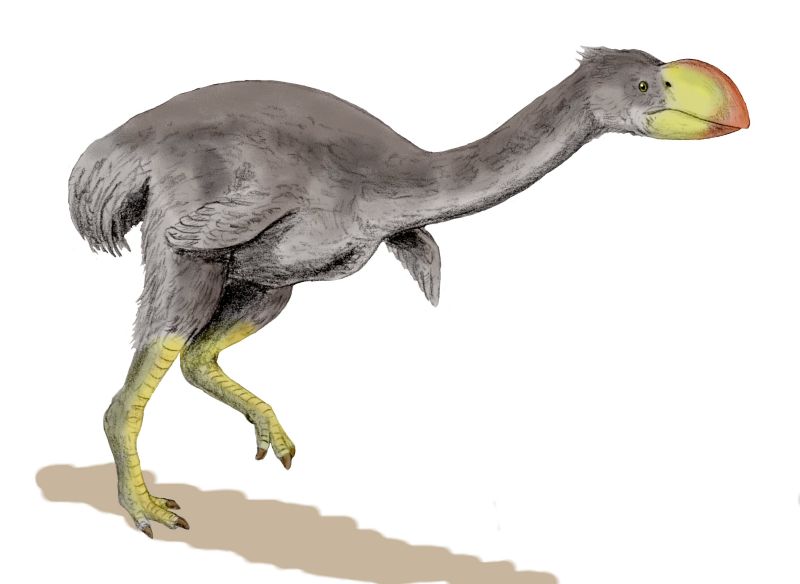- Dromornis stirtoni
Taxobox
name = "Dromornis stirtoni"
fossil_range =Late Miocene

image_width = 250px
image_caption = "Dromornis stirtoni"
regnum =Animal ia
phylum = Chordata
classis = Aves
ordo =Anseriformes
familia =Dromornithidae
genus = "Dromornis "
species = "D. stirtoni"
binomial = "Dromornis stirtoni"
binomial_authority = P. Rich,1979 "Dromornis stirtoni", or Stirton's Thunder Bird, a member of the family of
Dromornithidae , is the largest flightlessbird found through fossil evidenceFact|date=September 2008. It was three metres (10 feet) tall and weighed half a ton (500 kilos). It inhabited subtropical open woodlands inAustralia during the LateMiocene and may have been carnivorous. It was heavier than "Aepyornis " and taller than theMoa . Due to the poor fossil record of "Dromornis australis " (thetype species of the genus) and the large time gap between the two "Dromornis" species, "D. stirtoni" may eventually be reassigned to the genus "Bullockornis ".This species had a long neck and stub-like wings, rendering it flightless.cite book| last = Ellis| first = Richard| authorlink = Richard Ellis (biologist) | title = No Turning Back: The Life and Death of Animal Species| publisher = Harper Perennial | date = 2004| location = New York| pages = 102| isbn =0-06-055804-0 ] Its legs were powerful, but it is not believed to have been a fast runner. The bird's beak was large and immensely powerful, leading early researchers to believe that it was used to shear through tough plant stalks. However, recently others have argued that the size of the beak suggests that the bird was a carnivore.
See also
*
Australian megafauna
*Dromornithidae
*History of Australia References
* Rich, P. (1979): The Dromornithidae, an extinct family of large ground birds endemic to Australia. "Bureau of National Resources, Geology and Geophysics Bulletin" 184: 1–196.
External links
* [http://amol.org.au/discovernet/alcoota/dromornis.asp Exhibit of reconstructed skeleton]
Wikimedia Foundation. 2010.
